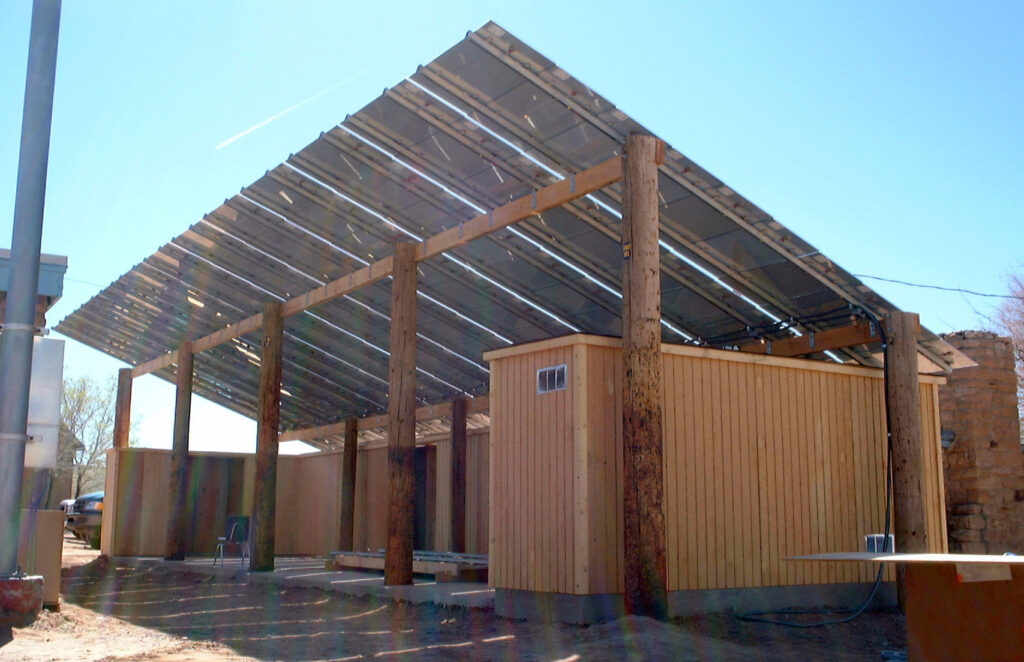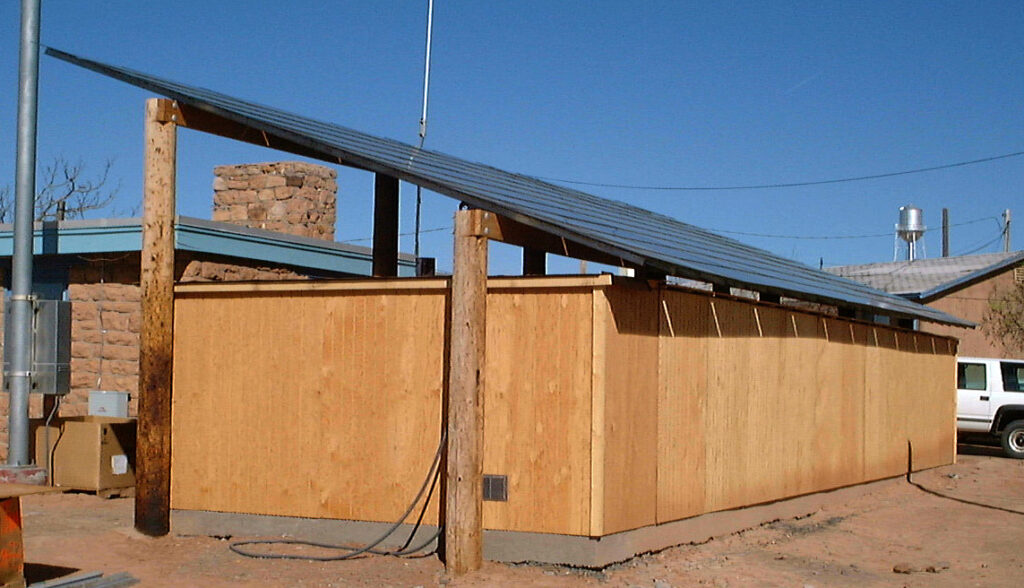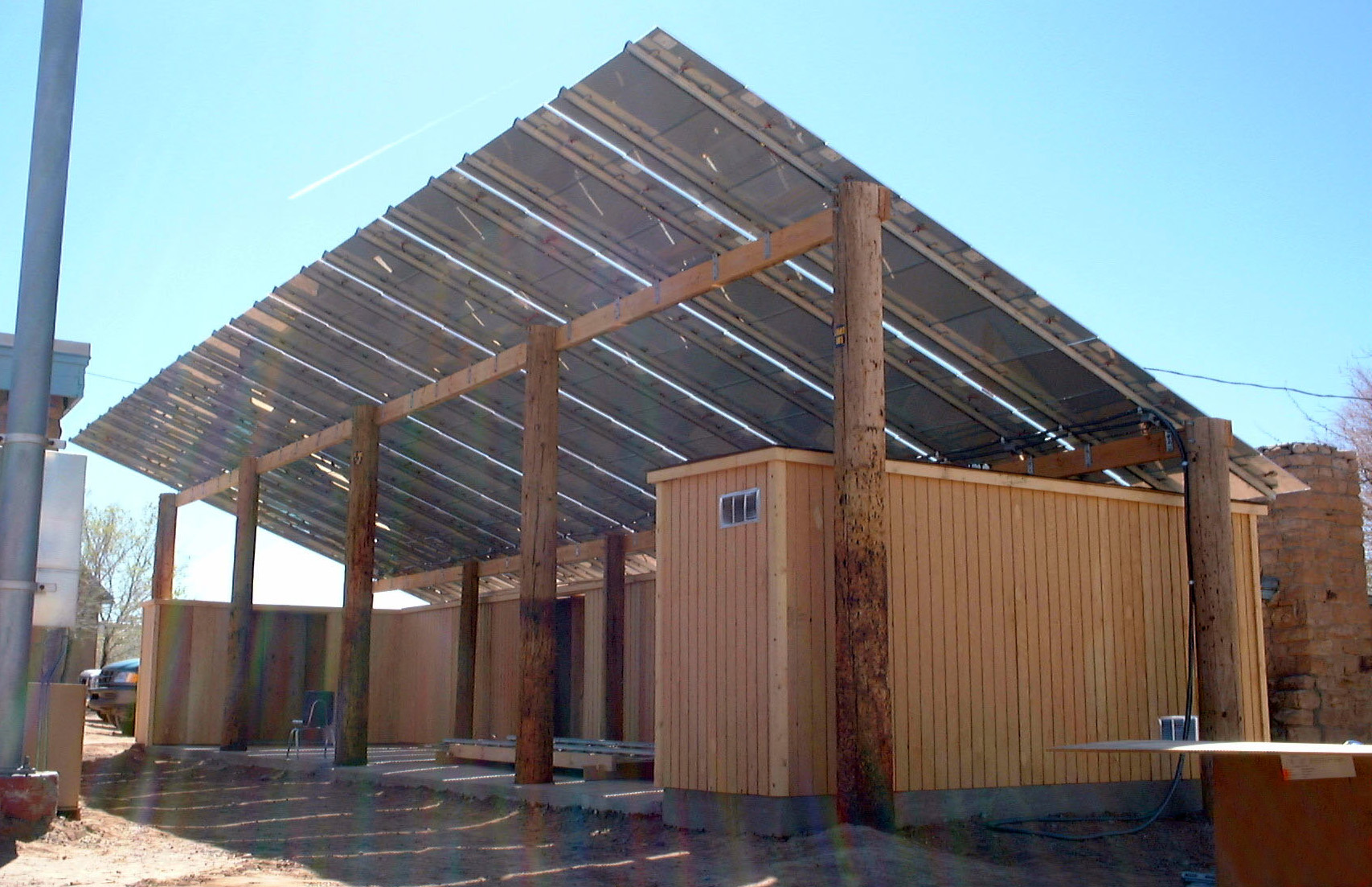

Solar panels shade a classroom. The simple building form is derived from the traditonal southwestern ramada. Both photographs Kiss + Cathcart Architects
| Location | Seba Dalkai, Arizona, USA |
| Date | 2000 |
| Organization | Native American Photovoltaics (NAPV) |
| Client | Seba Dalkai School |
| Design Firm | Kiss + Cathcart Architects |
| Designer | Gregory Kiss |
| Project Engineer | TerraSolar |
| Major Funding | Federal Energy Management Program, US Department of Energy, NAPV |
| Manufacturer | NAPV |
| Cost | $50,000 |
| Area | 1,200 sq. ft./111 sq. m |
When architect Gregory Kiss cofounded the nonprofit organization Native American Photovoltaics (NAPV) with Gregory Smith, Peterson Zah, and Roman Bitsuie, he knew he could put the experience he had gained in solar technology from his New York–based architectural practice, Kiss + Cathcart Architects, to good use. Since 1998 NAPV has been manufacturing and installing stand-alone solar-powered energy systems for Native American households and other facilities on Arizona’s Navajo reservations. Says Kiss, “Since the Navajo reservation has perhaps the greatest need for photovoltaic technology in the United States, it seemed like an obvious challenge.”
Unlike New York, where solar panels are occasionally used to augment reliable power from the municipal power grid, much of the Navajo nation had no power at all. This meant that up to 25,000 households lacked the basic benefits of refrigeration and electric light. These infrastructural problems translated into poor diets and fewer working hours for a population that has one of the world’s highest incidences of diabetes and a rate of unemployment hovering around 75 percent.
Education is one avenue for helping overcome these obstacles, so it is fitting that one of the NAPV’s first tribal projects was for a school. The Seba Dalkai school is a Bureau of Indian Affairs institution for children in kindergarten through twelfth grade. The solar-powered pavilion Kiss + Cathcart designed for the school creates a shady space for use as a classroom or a performance stage, while the four-kilowatt photovoltaic system on the roof creates auxiliary power for computers.
The group hopes that in addition to augmenting the school’s environmental sciences curriculum, the pavilion will also be used to train people from the Navajo nation and beyond to build, install, and service photovoltaic systems—eventually fostering an industry in alternative power sources.
















READ OR LEAVE A COMMENT